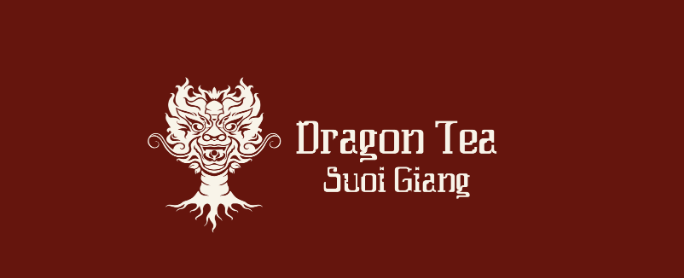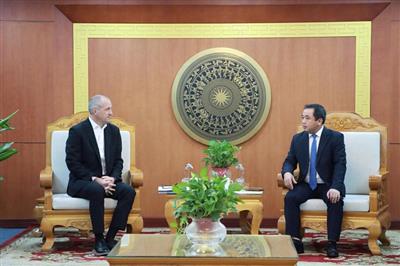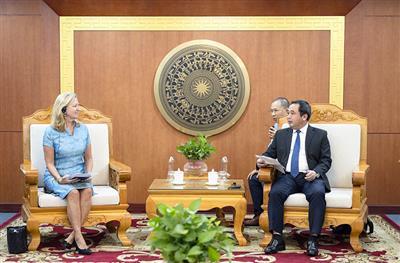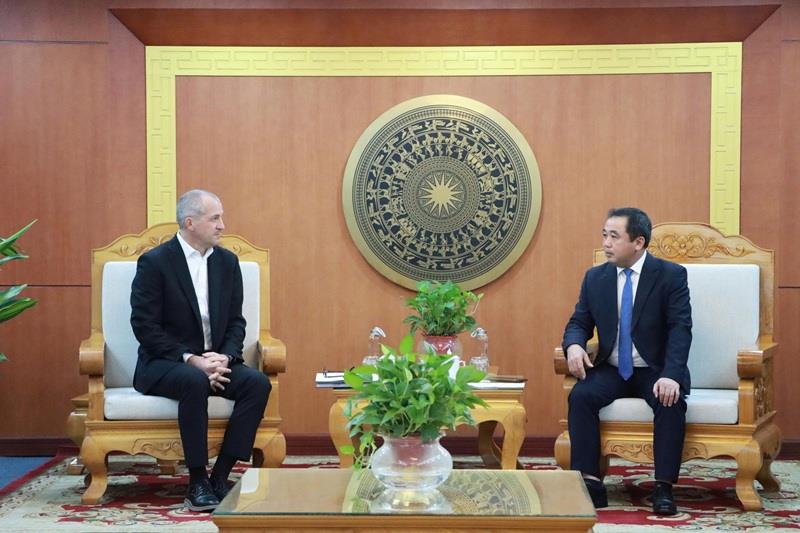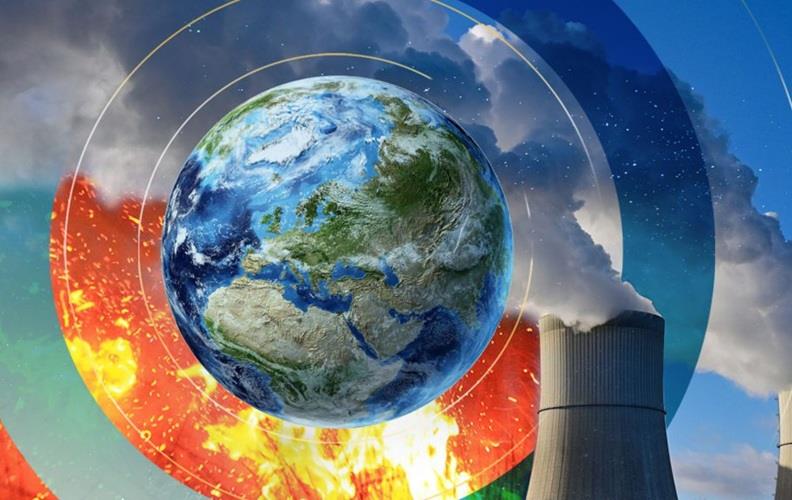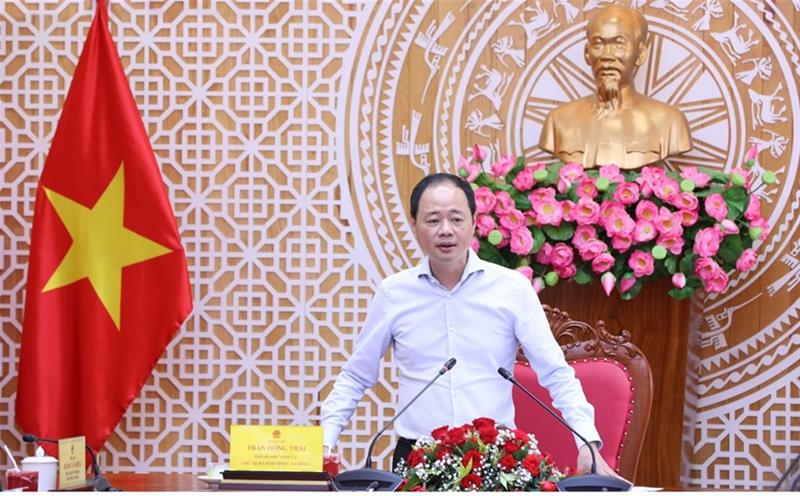
Science, technology, and innovation: The foundation for doubling productivity and increasing product value
14/11/2025TN&MTAt the conference “Promoting breakthroughs in scientific research, technology, and innovation linked to training in institutes and universities” on November 14, Minister Tran Duc Thang affirmed that science, technology, and innovation are becoming the key drivers of development in Vietnam’s agriculture and environment sector.
The conference highlighted a series of proposals to remove institutional barriers, accelerate digital transformation, develop high-quality human resources, and strengthen collaboration to achieve breakthroughs in productivity, product value, and competitiveness for the sector in the coming period.
Science, technology, and innovation: The sector’s driving force
During his speech, Minister Tran Duc Thang emphasized that education and science and technology have never received as much attention from the Party and State as they do today. The Politburo’s consecutive adoption of Resolution 57 on science, technology, and innovation and Resolution 71 on education and training provides clear evidence.

Minister Tran Duc Thang, Member of the Party Central Committee, emphasizes that advancing science, technology, and innovation is a core mandate for implementing Resolutions 57 and 71, expressing confidence in the Ministry’s long-standing scientific community
“For many years, the Ministry’s research budget has consistently ranked among the highest, averaging VND 1,000 billion per year. This support has enabled the sector to develop thousands of new crop and livestock varieties, biological processes and products, and advanced irrigation and fertilization technologies. These innovations have helped Vietnamese agriculture progress from food scarcity to sufficiency, quality, and safety, feeding over 100 million people and aiming for USD 70 billion in export turnover by 2025,” Minister Tran Duc Thang stated.
Amid shrinking farmland and climate change impacts, the Minister stressed that achieving the sector’s 4% growth target in 2025 relies on two main strategies: “double productivity” and “increase product value.” Based on this, he urged training and research institutions to submit by November specific proposals on equipment needed to support major research directions, which the Ministry will consider including in the 2026–2030 Plan for implementation starting in early 2026.
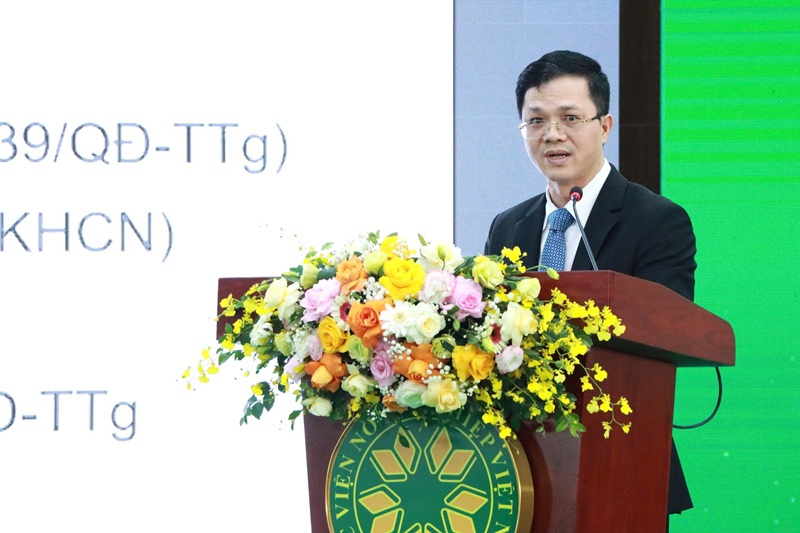
Mr. Nguyen Van Long, Director of the Department of Science and Technology, highlights strong results in 2021–2025, with technologies widely adopted to reduce production costs, increase profits, and improve efficiency by 10–30%, driving growth through high-tech agricultural investment
Reporting at the conference, Director of the Department of Science and Technology Nguyen Van Long stated that as of November 14, 2025, the Ministry had been assigned 188 science and technology tasks, of which 57 have been completed, 119 are on schedule, and 11 are behind schedule. The Ministry is finalizing procedures for 52 tasks under Resolution 57 and requesting more than VND 4,584 billion for 28 projects to enhance sectoral capacity during 2026–2030.
In training, institutes and universities have produced 415 master’s graduates and 212 doctoral graduates. The Ministry has issued 193 national technical regulations and 1,864 national standards, while completing 3 additional QCVNs and 82 TCVNs in 2025. These standards are crucial for helping businesses and farmers reduce costs, increase profits, and improve production efficiency by 10–30%.
Proposals to promote research and innovation
At the conference, Deputy Minister Phung Duc Tien highlighted the role of science and technology in transforming Vietnam from a traditional agricultural country into one with strong agricultural export capabilities. To implement breakthroughs effectively and on schedule—driving strong development in the agriculture and environment sector and contributing to GDP growth—he outlined several key tasks.
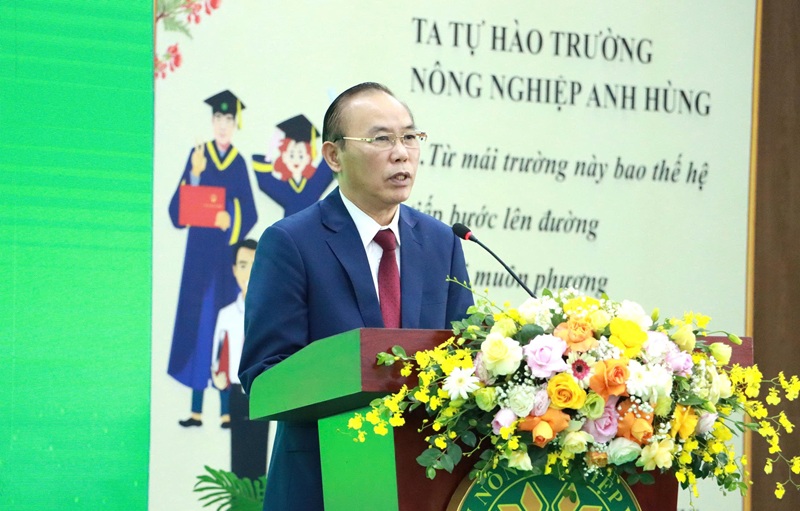
Deputy Minister Phung Duc Tien outlines key tasks for implementing Resolution 57, including revising specialized regulations and reducing administrative procedures to accelerate research, technology transfer, and application in production
These include: revising specialized laws to remove obstacles and reduce administrative procedures; reviewing and adjusting national programs to promote breakthroughs in science, technology, and digital transformation; restructuring scientific and technological organizations for lean, autonomous, and efficient operations; and aligning research with practical needs, with priority given to biotechnology.
Additionally, efforts should focus on comprehensive digital transformation and building sectoral databases; improving mechanisms for State–University–Enterprise collaboration; developing high-quality human resources in science and technology; attracting top experts; and enhancing international cooperation to apply advanced scientific and technological achievements in production.
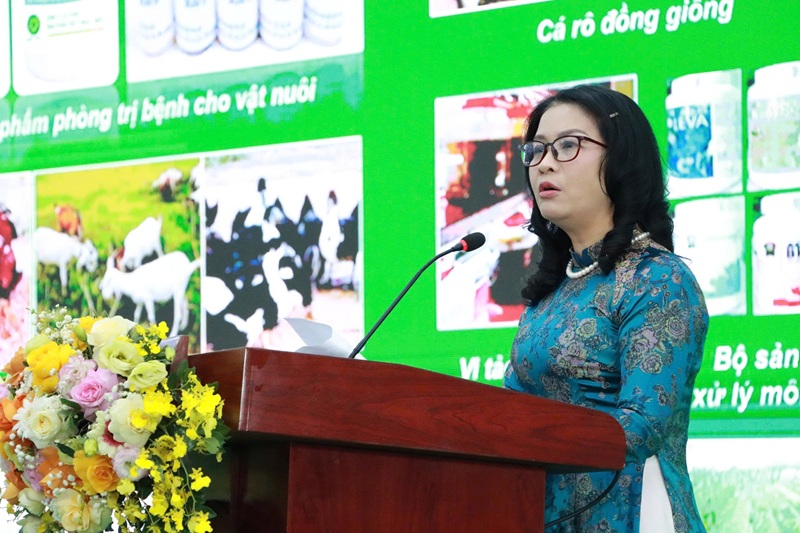
Prof. Dr. Nguyen Thi Lan, Director of the Vietnam Academy of Agriculture, shares innovation ecosystem models inspired by leading global hubs such as Silicon Valley (Stanford University) and Food Valley (Wageningen University)
To provide universities space to develop innovation ecosystems, Ms. Nguyen Thi Lan proposed completing the legal framework to promote research, innovation, intellectual property, and commercialization of scientific products, including technology valuation, establishing and operating spin-offs, and registering intellectual property internationally to bring research results to global markets.
In the water sector, Mr. Tran Dinh Hoa from the Vietnam Academy for Water Resources emphasized the need to promote Artificial Intelligence (AI), Big Data, Internet of Things (IoT), and Blockchain in water monitoring and forecasting. This includes developing smart monitoring networks and automating data collection on rainfall, water levels, water quality, and salinity to improve accuracy and timeliness in forecasts of water resources, floods, droughts, and saltwater intrusion.
Representatives from the Institute of Surveying and Mapping proposed two solutions to accelerate breakthroughs in science, technology, innovation, and digital transformation for agriculture and the environment. In the mapping sector, priority research areas include: developing dynamic digital maps and territorial Digital Twins to support assessment, forecasting, and decision-making in agriculture and environmental resource management; and developing a GeoAI assistant for national geospatial data queries.
Participants agreed that science, technology, and innovation must become a continuous foundation and the key to achieving the sector’s goal of “doubling productivity and increasing product value,” enhancing competitiveness, and contributing sustainably to national growth. This commitment is shared across regulatory agencies, research institutes, universities, and the business community in the new phase—where knowledge, technology, and innovation will determine the pace of development across the sector.
Khanh Linh - Ngoc Huyen

